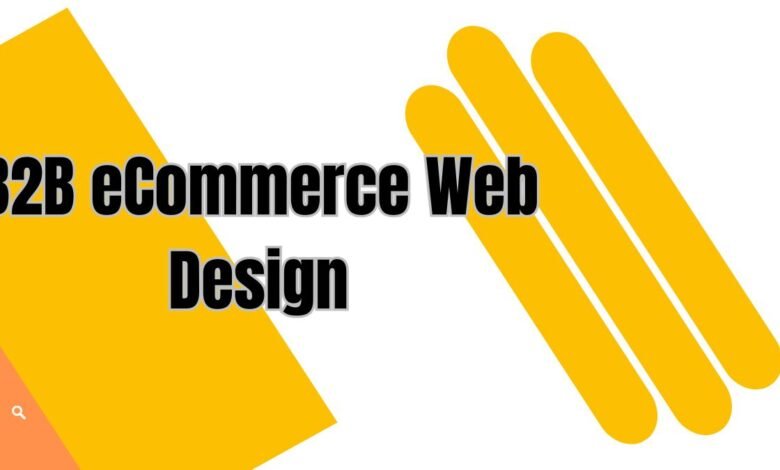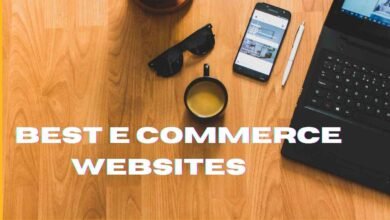B2B eCommerce Web Design: Ultimate Practices for 2024

B2B eCommerce web design, web design is a pivotal factor that significantly influences how businesses interact online. Unlike B2C (business-to-consumer), B2B eCommerce sites cater to a unique set of users — decision-makers, procurement professionals, and teams. Creating a well-optimized B2B eCommerce site is crucial to ensure that these users can easily navigate the site, find the products or services they need, and make informed purchasing decisions. sIn this article, we will discuss essential components that make a B2B eCommerce website effective. We will also integrate important SEO-related keywords like responsive design for B2B eCommerce, user experience in B2B online stores, mobile optimization for B2B websites, and more.
Why Web Design Matters for B2B eCommerce
Good web design is more than aesthetics; it’s about functionality, user experience, and ensuring that business customers can easily perform their tasks. In the B2B space, websites serve as the backbone of customer interactions, providing an environment for efficient and seamless transactions. A poorly designed website can result in abandoned purchases and lost revenue.
The Unique Requirements of B2B Websites
B2B websites need to cater to specific user needs, which differ from typical B2C sites. These users often require the ability to access detailed product information, compare prices, manage bulk orders, and interact with custom pricing and order processes. Ensuring these functions work flawlessly is essential to providing a great user experience.
User Experience in B2B Online Stores: B2B eCommerce Web Design
User experience (UX) is a key factor in the success of a B2B eCommerce site. The site should be easy to navigate, with a clear structure that leads users to their desired actions. A well-thought-out UX design helps improve conversion rates and keeps users coming back for more. Elements such as easy-to-use navigation menus, simple layouts, and effective calls to action can significantly enhance the user experience in B2B online stores.
Mobile Optimization for B2B Websites
More and more businesses are using mobile devices to place orders, manage accounts, and browse catalogs. Ensuring that your B2B website is fully optimized for mobile use is critical. Mobile optimization for B2B websites should focus on easy navigation, quick load times, and ensuring that all essential functions are accessible via mobile devices.
B2B eCommerce Platform Integration: B2B eCommerce Web Design
A strong B2B eCommerce site requires seamless integration with other platforms such as customer relationship management (CRM) systems, enterprise resource planning (ERP) tools, and payment gateways. B2B eCommerce platform integration helps streamline operations, allowing for automated inventory updates, order tracking, and real-time pricing. This is crucial for ensuring a smooth experience for both your customers and your internal teams.
Must Visit: Flex Flows
B2B Product Catalog Management

Managing a large product catalog can be challenging, especially in a B2B environment where companies often deal with hundreds or thousands of products. B2B product catalog management should allow for easy updates, the ability to handle multiple price tiers, and the capacity for customization based on customer needs. Effective catalog management ensures that customers can quickly find the products they need, with accurate information and pricing.
The Importance of Fast Loading Speeds
In B2B eCommerce, time is money. Business buyers often need to make decisions quickly and do not have the patience for slow-loading pages. Optimizing your website for fast load times is critical. This can be achieved by compressing images, reducing unnecessary scripts, and optimizing your website’s code.
Effective Functionality for B2B eCommerce
Having a robust search functionality is essential in B2B eCommerce. Business buyers often know exactly what they’re looking for, and they expect to find it quickly. Implementing advanced search features like filtering by product specifications, price range, and availability can greatly enhance the user experience.
Security and Trust in B2B Web Design
In the world of B2B transactions, security and trust are paramount. A secure website not only protects your data but also builds trust with your clients. This includes using secure payment gateways, SSL certificates, and ensuring compliance with industry standards such as GDPR.
B2B Checkout: B2B eCommerce Web DesignThe checkout process for B2B eCommerce sites needs to be both robust and simple. Unlike B2C, where customers typically make single purchases, B2B customers may need to order in bulk, repeat orders, or set up purchasing agreements. A streamlined yet flexible checkout process can significantly reduce abandoned carts and improve the overall user experience.
Role of Personalization in B2B eCommerce
Personalization is increasingly becoming a critical factor in B2B eCommerce. By offering tailored experiences, such as custom pricing, product recommendations, and individualized offers, businesses can build stronger relationships with their clients. Personalization allows you to cater directly to the needs and preferences of each customer, making them more likely to return for future purchases.
SEO Best Practices B2B eCommerce

Optimizing your B2B eCommerce website for search engines is crucial for driving traffic and improving visibility. Incorporating the right keywords, such as “responsive design for B2B eCommerce,” “mobile optimization for B2B websites,” and “B2B product catalog management,” can help attract the right audience. In addition, creating high-quality content, ensuring fast load times, and having a mobile-friendly site are all vital for SEO success.
Conclusion
A well-designed B2B eCommerce website is the key to building successful business relationships and driving sales. By focusing on responsive design, enhancing the user experience, integrating essential platforms, and prioritizing security, you can create a website that meets the needs of business buyers. Remember, a B2B website is not just a tool for transactions; it’s a digital experience that should engage and serve your customers efficiently.
(FAQs)
What is responsive design for B2B eCommerce?
Responsive design ensures that your B2B website adjusts to different screen sizes, providing a consistent user experience across devices.
Why is user experience important in B2B online stores?
User experience helps ensure that your customers can easily find products, place orders, and navigate the website, leading to higher satisfaction and more sales.
How does mobile optimization benefit B2B websites?
Mobile optimization makes it easier for users to access your site on smartphones and tablets, ensuring they can make purchases and manage their accounts on the go.
What are the key elements of B2B product catalog management?
B2B product catalog management involves organizing products efficiently, handling custom pricing, and ensuring up-to-date product information for business buyers.
How can platform integration improve a B2B eCommerce site?
Integrating your B2B eCommerce site with platforms like CRMs and ERPs streamlines operations, improving inventory management, pricing, and customer service.
Read More: Advertising and Digital Marketing





